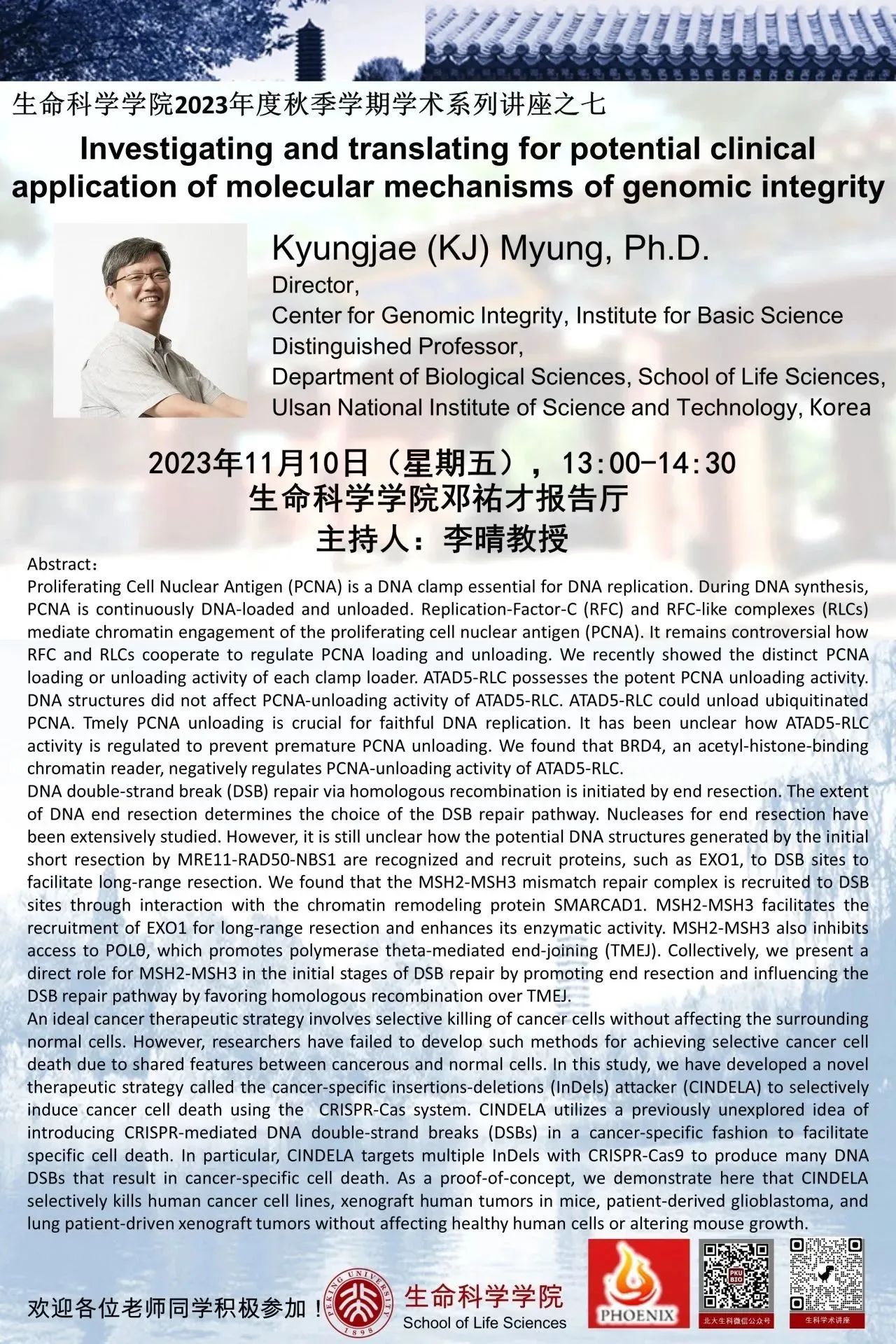
Speaker: Henry Wai-chung YEUNG, Department of Geography and GPN@NUS Centre, National University of Singapore, China
Time: 13:00-14:30 p.m., November 10, 2023, GMT+8
Venue: Deng Youcai Academic Hall, School of Life Sciences, PKU
Abstract:
Proliferating Cell Nuclear Antigen (PCNA) is a DNA clamp essential for DNA replication. During DNA synthesis,PCNA is continuously DNA-loaded and unloaded. Replication-Factor-C (RFC) and RFC-like complexes (RLCs)mediate chromatin engagement of the proliferating cell nuclear antigen (PCNA). It remains controversial how RFC and RLCS cooperate to regulate PCNA loading and unloading. We recently showed the distinct PCNA loading or unloading activity of each clamp loader. ATAD5-RLC possesses the potent PCNA unloading activity.DNA structures did not affect PCNA-unloading activity of ATAD5 RLC. ATAD5-RLC could unload ubiquitinated PCNA. Timely PCNA unloading is crucial for faithful DNA replication. It has been unclear how ATAD5-RLC activity is regulated to prevent premature PCNA unloading. We found that BRD4, an acetyl-histone-binding chromatin reader, negatively regulates PCNA-unloading activity of ATAD5-RLC.
DNA double-strand break (DSB) repair via homologous recombination is initiated by end resection. The extent of DNA end resection determines the choice of the DSB repair pathway, Nucleases for end resection have been extensively studied. However, it is still unclear how the potential DNA structures generated by the initial short resection by MRE11-RAD50-NBS1 are recognized and recruit proteins, such as EXO1, to DSB sites to facilitate long-range resection. We found that the MSH2-MSH3 mismatch repair complex is recruited to DSB sites through interaction with the chromatin remodeling protein SMARCAD1. MSH2-MSH3 facilitates the recruitment of EXO1 for long-range resection and enhances its enzymatic activity. MSH2-MSH3 also inhibits access to POLѲ, which promotes polymerase theta-mediated end-joining (TMEJ). Collectively, we present a direct role for MSH2-MSH3 in the initial stages of DSB repair by promoting end resection and influencing theDSB repair pathway by favoring homologous recombination over TMEJ,
Source: School of Life Sciences, PKU
